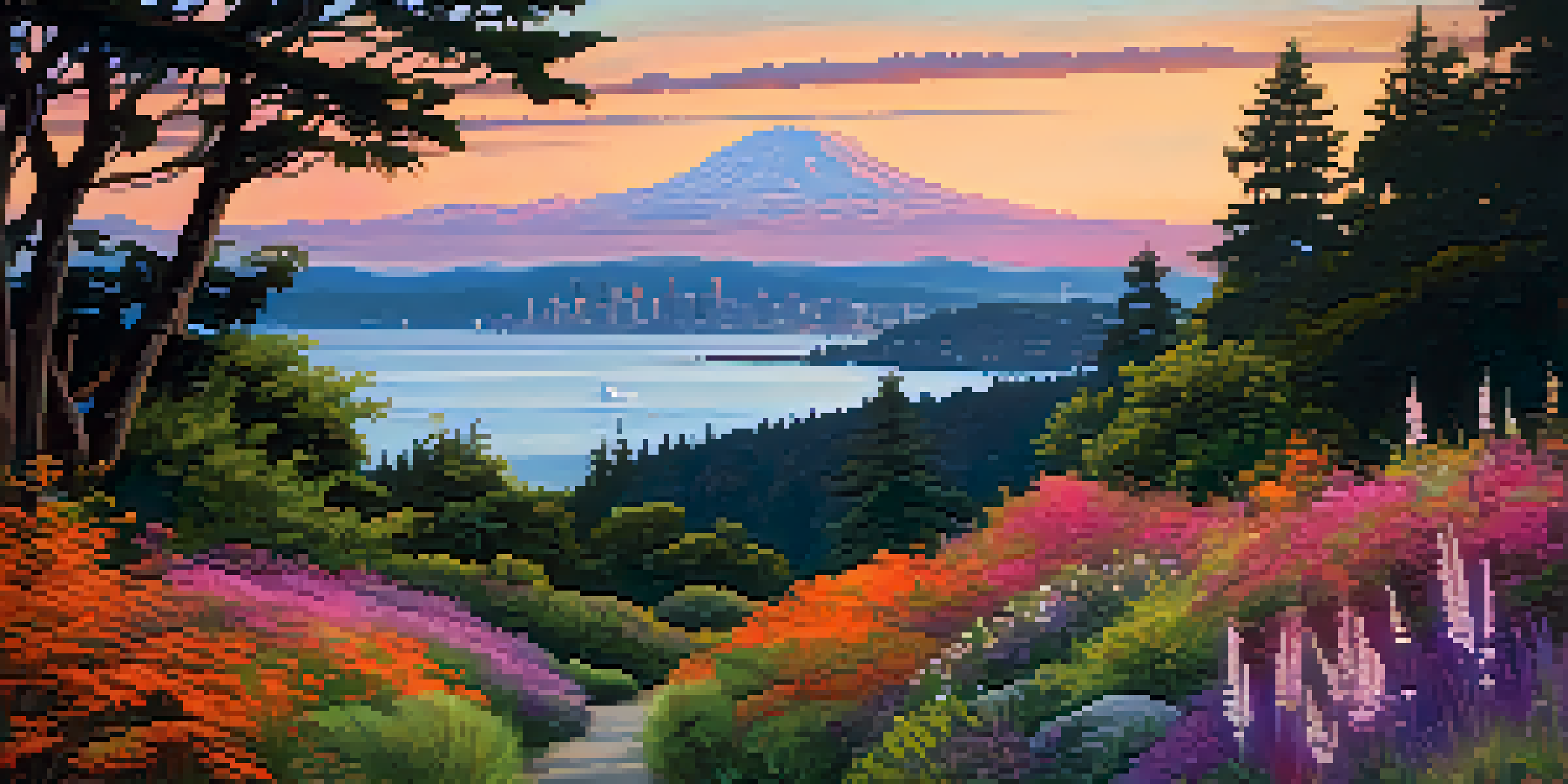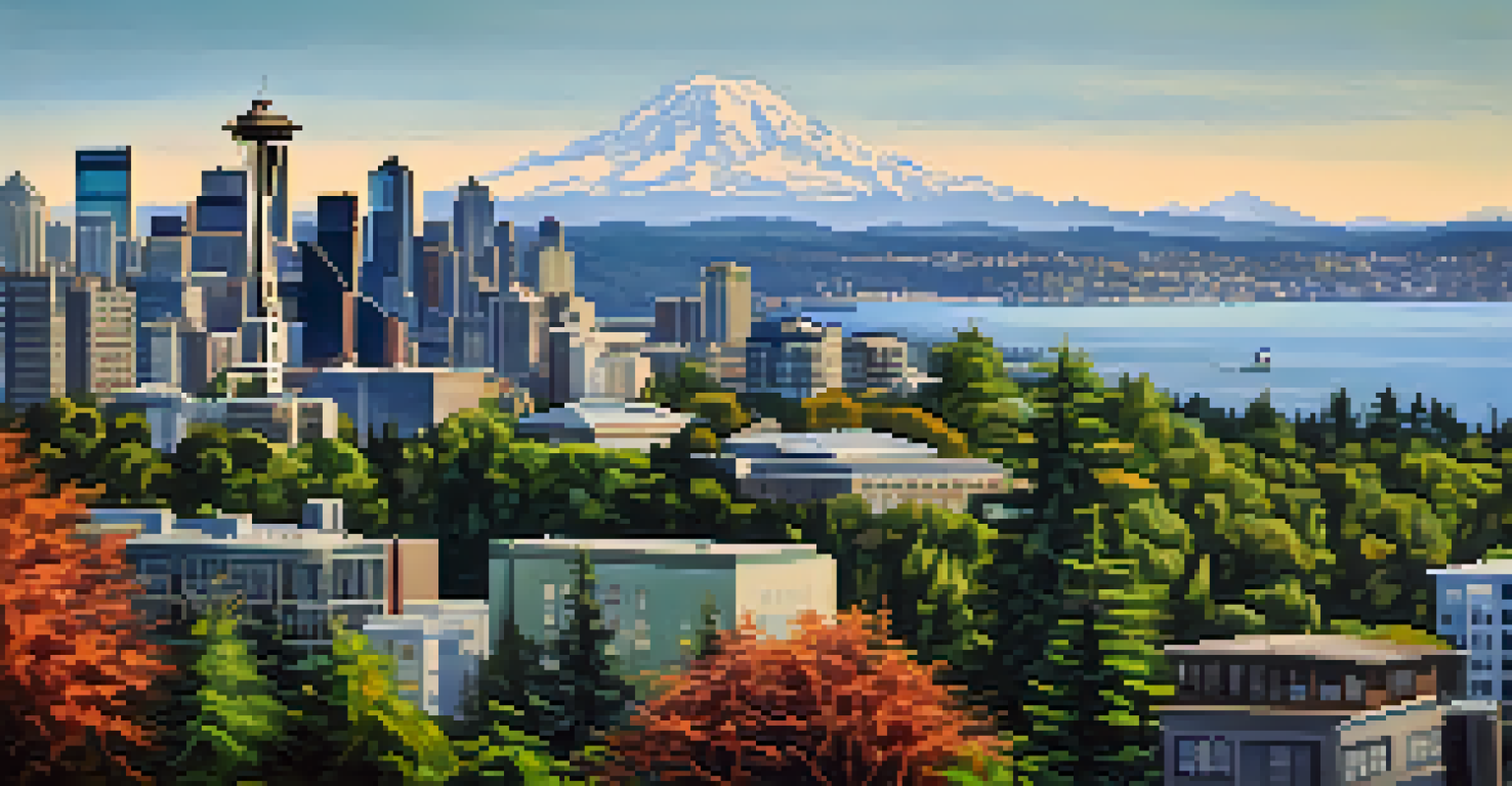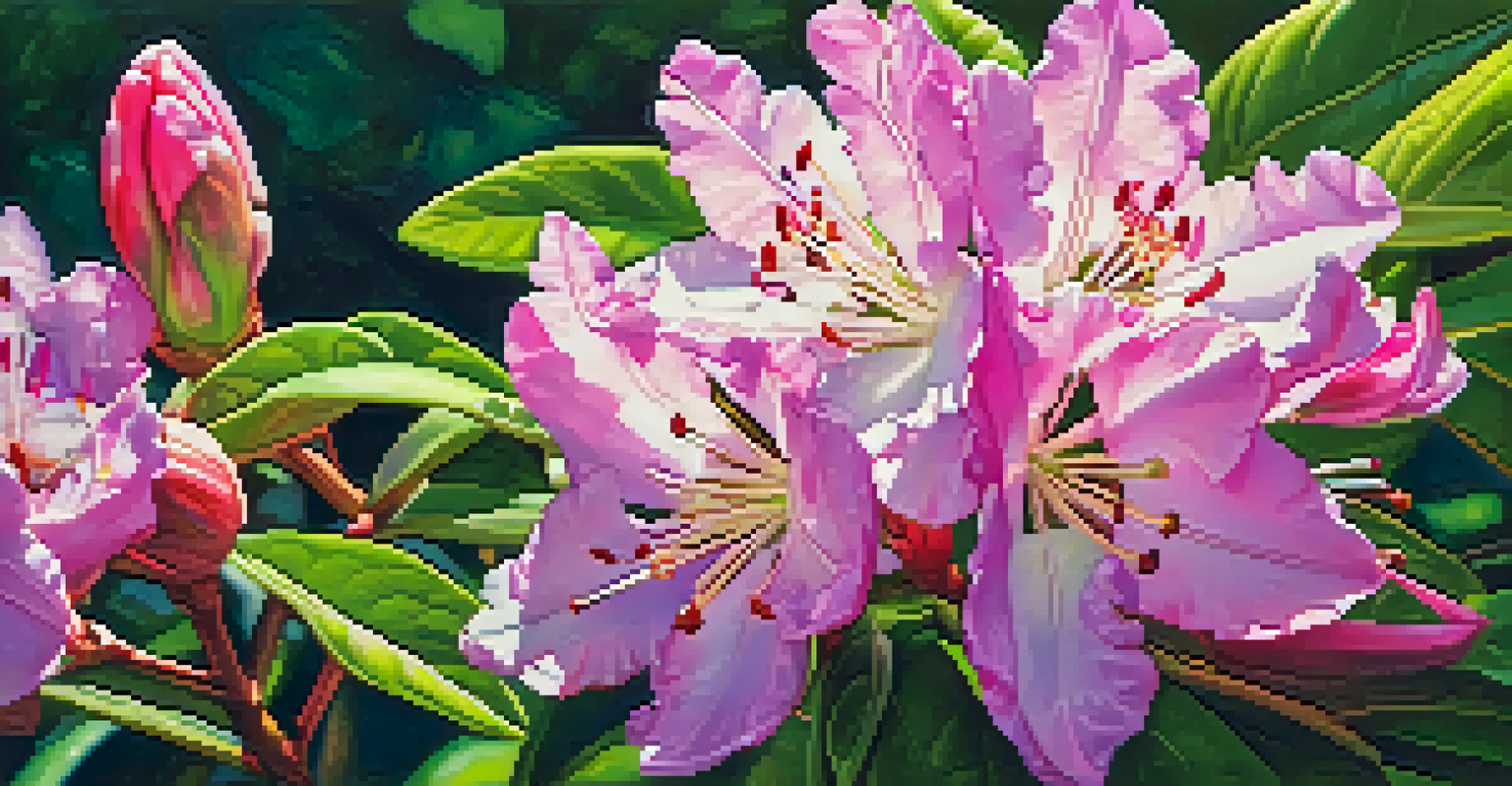Seattle's Climate and Its Influence on Local Flora and Fauna

Understanding Seattle's Unique Maritime Climate
Seattle's climate is characterized by its mild, maritime conditions, heavily influenced by its proximity to the Pacific Ocean. This means that winters are typically wet and cool, while summers are pleasantly warm and dry. The average annual rainfall hovers around 37 inches, which supports lush vegetation. Such conditions create a unique environment where certain species thrive, shaping the city’s ecological identity.
In every walk with nature one receives far more than he seeks.
The city's climate isn't just about temperature and rainfall; it's also impacted by the surrounding mountains and bodies of water. The Olympic Mountains to the west create a rain shadow effect, leading to drier areas east of the city. This topography plays a significant role in the local biodiversity, offering various microclimates that cater to different plant and animal species.
Understanding Seattle's climate is crucial for appreciating the diverse ecosystems it supports. From coastal wetlands to dense forests, these environments are not only habitats for wildlife but also vital for ecological balance. This foundation sets the stage for examining the specific flora and fauna that call Seattle home.
Flora: Native Plants Thriving in Seattle's Climate
Seattle's climate nurtures a rich variety of native plants, including iconic species like the Douglas fir and Western red cedar. These trees are well-adapted to the moist conditions, showcasing tall, majestic forms that define the region's landscapes. The lush understory, filled with ferns and shrubs, further contributes to the area's biodiversity and aesthetic appeal.

In addition to trees, many wildflowers bloom throughout the spring and summer, adding color and life to the city. Species like the Pacific rhododendron and camas lily are not only beautiful but also play essential roles in local ecosystems by supporting pollinators. These native plants have evolved to withstand the unique climatic conditions of the Pacific Northwest, making them resilient and vital.
Seattle's Climate Shapes Biodiversity
The unique maritime climate of Seattle, influenced by the Pacific Ocean and surrounding mountains, creates diverse ecosystems that support a variety of native flora and fauna.
The preservation of these native species is critical to maintaining the ecological integrity of Seattle. As urban development continues, efforts are being made to restore native plant habitats, which helps protect the overall health of the environment. This connection between climate and flora illustrates the delicate balance of Seattle's ecosystems.
Fauna: Wildlife Adaptations to Seattle's Environment
The fauna of Seattle is as diverse as its flora, with species adapted to thrive in the city's unique climate. Common mammals include black-tailed deer and raccoons, which have adapted to urban environments, finding food sources in parks and residential areas. These animals have developed behaviors that allow them to coexist with humans, showcasing their resilience.
The clearest way into the Universe is through a forest wilderness.
Birdwatchers can enjoy sightings of various species, from the vibrant Anna's hummingbird to the majestic bald eagle. The mild climate enables these birds to thrive year-round, with many choosing to stay instead of migrating. Seattle's numerous parks and waterfronts provide essential habitats for these avian species, illustrating the importance of urban green spaces.
Moreover, the waters surrounding Seattle are home to a rich marine ecosystem, including orcas and sea lions. The health of these marine populations is directly linked to the climate, as changes in temperature and water quality can impact their food sources. Understanding these connections highlights the intricate web of life that exists in Seattle's environment.
The Role of Urban Green Spaces in Biodiversity
Urban green spaces in Seattle, such as parks and gardens, play a vital role in supporting local biodiversity. These areas provide critical habitats for many species, acting as refuges amidst the urban landscape. Parks like Discovery Park and Seward Park not only offer recreational opportunities but also preserve essential ecological functions.
These green spaces help mitigate the effects of urbanization by maintaining ecosystems that support various wildlife. They serve as corridors for animals to travel and find food, ensuring genetic diversity and healthy populations. Additionally, these areas are crucial for plant species, as they allow for natural growth and reproduction.
Urban Green Spaces Enhance Ecosystems
Parks and gardens in Seattle serve as vital habitats for wildlife and promote biodiversity, highlighting the importance of green spaces amidst urban development.
Furthermore, urban gardens and community initiatives encourage residents to engage with nature and promote biodiversity. By planting native species, residents can contribute to the ecological health of their neighborhoods. This interaction between urban life and nature is a testament to how Seattle balances development with environmental stewardship.
Climate Change: Challenges Facing Seattle's Ecosystems
As Seattle's climate continues to change, local ecosystems face significant challenges. Rising temperatures and altered precipitation patterns can disrupt the delicate balance that supports native flora and fauna. For example, changes in rainfall can affect plant growth cycles and the availability of food for wildlife.
Invasive species, often accelerated by climate change, pose another threat to Seattle's biodiversity. These non-native plants and animals can outcompete local species for resources, leading to declines in native populations. The competition for habitat and food can significantly impact the intricate relationships within ecosystems.
Addressing these challenges requires concerted efforts from the community, government, and environmental organizations. Initiatives aimed at conservation, restoration, and education are crucial to protecting Seattle's unique biodiversity. By understanding the impacts of climate change, residents can take proactive steps to support their local ecosystems.
Community Engagement: Protecting Seattle's Natural Heritage
Community engagement is key to preserving Seattle's natural heritage and biodiversity. Local organizations and volunteers frequently participate in restoration projects, planting native species and removing invasive plants. These efforts foster a sense of ownership and responsibility among residents for their local environment.
Educational programs in schools and community centers focus on the importance of biodiversity and climate awareness. By teaching the next generation about their local ecosystems, Seattle cultivates a culture of environmental stewardship. Workshops and events encourage residents to connect with nature and understand the impact of their actions.
Community Action for Ecosystem Health
Community engagement and education are crucial for preserving Seattle's natural heritage, as local residents actively participate in conservation efforts and citizen science initiatives.
Additionally, citizens are encouraged to participate in citizen science initiatives, helping track local wildlife populations and plant growth. This collective effort not only aids scientific research but also strengthens community bonds. Together, Seattle residents can play a vital role in ensuring a sustainable future for their unique ecosystems.
Looking Ahead: The Future of Seattle's Ecosystems
As we look to the future, the health of Seattle's ecosystems depends on our collective actions today. Climate resilience strategies, including habitat restoration and sustainable development, are essential to safeguarding local biodiversity. By prioritizing these efforts, Seattle can adapt to changing conditions while protecting its natural heritage.
Innovative approaches, such as green infrastructure, can help mitigate the impacts of urbanization on local ecosystems. Green roofs, rain gardens, and permeable pavement are examples of how cities can integrate nature into their design, promoting both biodiversity and urban resilience. These solutions not only enhance the beauty of the city but also provide essential ecological services.

Ultimately, the future of Seattle's flora and fauna relies on a shared commitment to environmental conservation. By fostering a culture that values and protects these ecosystems, we can ensure that Seattle remains a vibrant habitat for generations to come. The interplay between climate, flora, and fauna continues to shape this beautiful city, and it is our responsibility to nurture it.